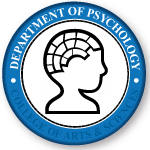Document Type
Article
Publication Date
2011
Publication Title
Creativity Research Journal
Volume
23
Issue
4
First Page
376
Last Page
380
Abstract
Reuter, Roth, Holve, & Hennig (2006) described what they called the first candidate gene for creativity. This study replicated and extended their work for a more careful analysis of five candidate genes: Dopamine Transporter (DAT), Catechol-O-Methyltransferase (COMT), Dopamine Receptor D4 (DRD4), D2 Dopamine Receptor (DRD2), and Tryptophane Hydroxylase (TPH1). Participants were 147 college students who received a battery of tests of creative potential. Multivariate analyses of variance indicated that ideational fluency scores were significantly associated with several genes (DAT, COMT, DRD4, and TPH1). This was apparent in both verbal and figural fluency ideation scores, before and after controlling general intelligence. Yet fluency, alone, is not an adequate measure of creativity, and the index that is by far the most important part of creativity (i.e., originality) had a negligible relationship with the genes under investigation. Hence, in contrast to earlier research, the conclusion offered here is that there is a clear genetic basis for ideational fluency, but that fluency, alone, is not sufficient to predict or guarantee creative performance. Hence, at present, the genetic basis of creativity remains uncertain.
Recommended Citation
Runco, Mark A.; Noble, Ernest P.; Reiter-Palmon, Roni; Acar, Selcuk; Ritchie, Terry; and Yurkovich, Justin M., "The Genetic Basis of Creativity and Ideational Fluency The Genetic Basis of Creativity and Ideational Fluency" (2011). Psychology Faculty Publications. 44.
https://digitalcommons.unomaha.edu/psychfacpub/44


Comments
"This is an Author's Accepted Manuscript of an article published in Runco, M. A., Noble, E. P., Reiter-Palmon, R., Acar, S., Ritchie, T., & Yurkovich, J. M. (October 01, 2011). The Genetic Basis of Creativity and Ideational Fluency. Creativity Research Journal, 23, 4, 376-380. © 2011 Taylor & Francis, available online at: http://www.tandfonline.com/10.1080/10400419.2011.621859.